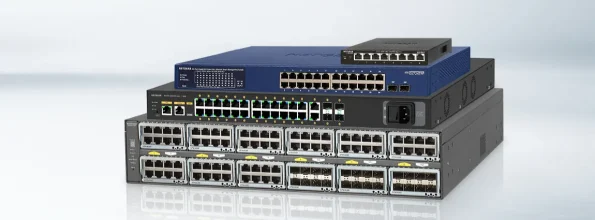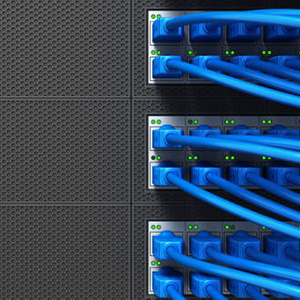The Fiber-Life Network Switch, a paragon of modern connectivity, boasts an exceptionally high-bandwidth backplane and a sophisticated internal switching matrix. This state-of-the-art device stands at the heart of today’s communication networks, ensuring seamless data flow with unmatched efficiency.
Network switch, in the realm of telecommunications, is the art of directing information along the most suitable path, facilitated by either manual intervention or automated equipment. In the broadest sense, a network switch is an indispensable component in a communication system, tasked with the critical role of information exchange

In the sophisticated ecosystem of computer networks, the concept of switching has emerged to enhance the collaborative mode of operation. Unlike the traditional HUB, which operates on a shared bandwidth model and lacks the ability to discern destination addresses, the Fiber-Life Network Switch introduces a paradigm shift. It employs an intelligent design that allows for the direct transmission of data packets to their intended recipients without the need for broadcast, thus eliminating the inefficiencies associated with data collision and retry mechanisms.
The Fiber-Life Network Switch is equipped with a high-bandwidth back bus and an internal switching matrix that connects all of its ports. Upon receiving a data packet, the control circuitry consults the MAC address table stored in memory to ascertain the destination port. The packet is then swiftly relayed to its intended destination, ensuring optimal data delivery. In cases where the destination MAC is unknown, the switch broadcasts the packet to all ports and updates its MAC address table upon receiving a response, thereby “learning” and adapting to the network’s dynamic structure.
The use of a Fiber-Life Network Switch also enables network segmentation, a feature that filters and forwards traffic based on the MAC address table. This intelligent filtering effectively isolates broadcast storms, minimizes the proliferation of error packets, and prevents bandwidth contention.
Moreover, the Fiber-Life Network Switch is capable of handling simultaneous data transmissions across multiple port pairs. Each port functions as an independent network segment, allowing connected devices to enjoy the full bandwidth without competition. This capability is particularly evident when comparing the performance of a Fiber-Life 10Mbps Ethernet switch, which can handle twice the traffic of a traditional 10Mbps shared HUB.
The Applications of Fiber-Life Network Switches
As the cornerstone of local area networks, Ethernet switches from Fiber-Life have become increasingly popular. With the advancement of switching technology and a significant reduction in cost, the adoption of Fiber-Life switches is fast becoming a standard practice.
In scenarios where an Ethernet network is burdened with a multitude of users, heavy applications, and diverse servers, the addition of a Fiber-Life 10/100Mbps switch can significantly enhance network performance. These switches are adept at handling both standard 10Mbps Ethernet data streams and high-speed 100Mbps Fast Ethernet connections.
When network utilization soars beyond 40% and the collision rate exceeds 10%, Fiber-Life Network Switches step in to alleviate the strain. Operating in full duplex mode, they can establish dedicated connections ranging from 20Mbps to 200Mbps, tailor-made for the network’s needs.
The impact of integrating Fiber-Life Network Switches varies across different network environments. A thorough understanding of network traffic patterns is essential for optimizing the role of these switches. The goal is to minimize and filter data traffic as much as possible. However, if a switch is improperly installed and ends up forwarding almost all received data packets, it fails to enhance the network’s performance, potentially reducing data transmission speeds and increasing latency.
The placement and addition of Fiber-Life Network Switches must be carefully considered. In networks with light loads and minimal traffic, the simplicity of a traditional HUB may be more advantageous than the complexity of a switch, given the processing time, buffer size, and packet regeneration requirements. It is crucial to recognize that while Fiber-Life Network Switches offer numerous benefits over HUBs, they are not universally superior, especially in less congested networks where existing resources can be effectively utilized.
In conclusion, the Fiber-Life Network Switch stands as a testament to technological innovation, offering a blend of performance, adaptability, and efficiency that is unmatched in today’s fast-paced digital landscape.

